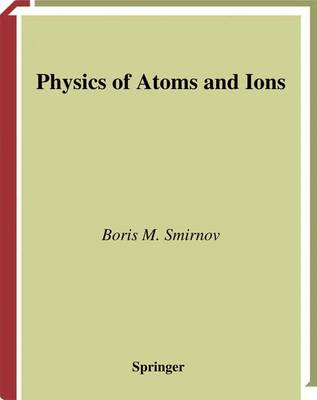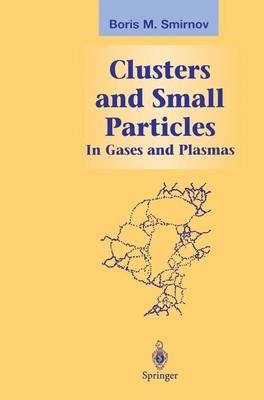Graduate Texts in Contemporary Physics
2 total works
Intended for advanced students of physics, chemistry, and related disciplines, this text treats the quantum theory of atoms and ions within the framework of self-consistent fields. It treats the structure and spectra of atoms and ions, their behavior in external fields, and their interactions, including collisions. Data needed for the analysis of collisions and other atomic processes are also included, making the book useful as a reference for researchers as well as students. In the main text, simple and convincing methods are used to explain the fundamental properties of atoms, molecules, and clusters; details and more advanced aspects of these topics are treated in the problems at the end of each chapter. The first part of the book is devoted to properties of atoms and ions considered as quantum systems of electrons orbiting a heavy Coulomb center. Self-consistent fields and the shell model give a logical and consistent picture, and provide reliable models for the analysis of atomic properties. The second part deals with interactions and collisions of particles -- including bound systems, such as molecules, clusters, and solids. The aim here is to relate the internal structure of the atoms to the interactions between them, providing useful insights for applications; the accompanying data in tables, charts, and spectra complement the theoretical discussion.
Small particles in gaseous systems are called clusters, aerosols, dust particles, Aitken particles, etc., depending on their size, the media where they are observed, and the field of science in which they are studied. Below we call clusters systems of bound atoms or molecules containing from several atoms (molecules) up to thousands, so that their structure can be essential for determining their properties. If clusters are like bulk systems, we call them small particles. The principal pecu liarity of clusters is with respect to magic numbers of cluster atoms that correspond to a heightened cluster stability. Magic numbers correspond to complete structures of clusters as systems of bound atoms or molecules. The values of magic nwnbers depend on the character of interaction of the cluster's atoms. Cluster parameters as a function of the number of cluster atoms n have extrema at the magic nwnbers of atoms. For example, a cluster with a magic nwnber of atoms has a higher binding energy and ionization potential than clusters with neighboring nwnbers of atoms. The difference between clusters and small particles is such that parameters of small particles are monotonic functions of the nwnber of their atoms, while for clusters these parameters have local extrema at magic nwnbers of atoms.

